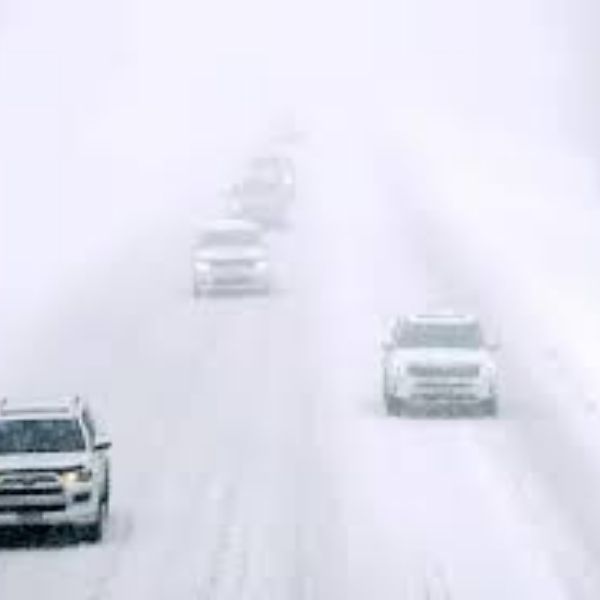As winter sets in and furnaces fire up again, experts caution against an unseen threat — carbon monoxide. The CDC warns that more than 400 Americans could lose their lives in their sleep before spring arrives. Here’s how to keep your home and family safe.
Urgent Wake-Up Call: Winter Brings Rising Carbon Monoxide Risks
As we fire up furnaces and seal our homes against the cold, the danger of invisible, odorless carbon monoxide (CO) poisoning climbs. It’s a quiet, hidden threat that often goes unnoticed — until tragedy strikes. Health agencies estimate that over 400 Americans die every year from unintentional, non‑fire carbon monoxide poisoning, which means hundreds of families could lose someone before spring if basic precautions are ignored
🔥 The Stark Numbers
- In the United States, over 400 people die each year from unintentional, non-fire–related CO poisoning.
- In 2015, there were 393 deaths, and 36% happened in December, January, or February.
- Provisional 2022 data shows 1,244 CO‐related deaths, including 624 accidental exposures.
- More than 100,000 people visit emergency departments annually due to accidental CO exposure.
- In Wisconsin, the Department of Health Services reports about 500 emergency-room visits each year, and state law requires CO detectors in homes with fuel-burning appliances.
Why the Sudden Surge in Cooler Months?
Because furnaces, space heaters, fireplaces, wood stoves, and portable generators run more often in fall and winter, the risk of CO build-up increases.
CO forms whenever fuel burns — gas, oil, kerosene, wood, or even car exhaust in attached garages.
Homes also get tighter in the cold, ventilation drops, and windows stay shut, making it easier for CO levels to rise.
What to Recognize: Early Warning Signs
CO poisoning often resembles the flu, food poisoning, or simple fatigue. If your furnace is running, don’t ignore these signs:
- Headache (especially in the morning or one that wakes you up)
- Dizziness or lightheadedness
- Weakness, nausea, or vomiting
- Chest pain or shortness of breath
- Confusion or disorientation
- In severe cases, loss of consciousness or death
Key Clues You May Be At Risk
- Condensation on windows after the furnace runs may signal poor ventilation, which can allow CO to build up.
- Your furnace is older, recently serviced, shows soot or rust around the vent terminal, or the draft seems weak.
- You have a fuel-burning appliance (gas furnace, wood stove, pellet stove) but no working CO detector.
- You’re using a generator, grill, or other combustion equipment indoors or in a garage.
- A car idles in an attached garage — even briefly — and can produce lethal CO levels.
Prevention: How to Protect Your Home & Family
Here’s a checklist you should act on today:
- Install a CO detector on every floor, especially near sleeping areas. Wisconsin law requires one outside each sleeping area and on every level in homes with fuel-burning appliances.
- Test your detector monthly; replace batteries twice a year, like during daylight saving time changes. Replace the entire unit every five years or as the manufacturer recommends.
- Have your furnace or any fuel-burning appliance (gas/wood/oil/propane) inspected and serviced annually by a qualified technician, including a venting system check.
- Never run a generator, grill, or vehicle in an enclosed space — garage, porch, or basement — even if the door is open. Exhaust can accumulate quickly.
- If your detector sounds or you suspect CO: Get everyone outside immediately, call 911 or the fire department, and do not stay inside to “wait and see.”
First Aid: If You Suspect CO Poisoning
- Move the person to fresh air right away.
- Call emergency services.
- If the person is unconscious and not breathing, start CPR if you’re trained.
- Do not re-enter the building until professionals say it’s safe.
Real-World Wisconsin
A study of CO exposure in Wisconsin from 2006–2016 reported an average of 195 suspected poisoning cases per year to the Wisconsin Poison Center.
Awareness of the state’s detector law remains under 50%, with one study showing fewer than 46% of households knew about the requirement — and awareness was strongly tied to actually having a detector. (pubmed.ncbi.nlm.nih.gov)
Local public health alerts in counties like Washburn County highlight that risk rises during winter months and urge households to stay vigilant.
Why This Matters to You
You’re in Wisconsin, you have a home with fuel-burning equipment (like a furnace), and cold weather has arrived. Multiple risks stack up fast: older homes, tighter insulation, reduced ventilation, and possibly less frequent equipment servicing. One mis-vented appliance or a blocked flue could turn your living room into a deadly threat.
Final Takeaway
This isn’t a “someday” danger — it’s a right-now risk once the furnace starts running. A single yearly inspection, along with a properly installed and well-maintained CO detector, can prevent tragedy. Treat your CO detector the same way you treat your smoke alarm: non-negotiable.












Leave a Reply